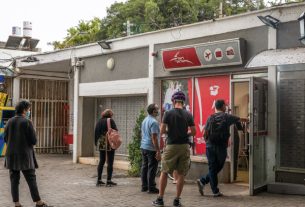The National Planning and Building Council (NPBC), chaired by Rabbi Natan El-Natan, gave its approval on October 17 to a set of measures that address homefront preparation concerns. Among these decisions are a fast-track process for augmenting medical staff, swift approval for new secure wards in several hospitals, fortifying buildings, and upgrading emergency energy infrastructure.
Here are the emergency decisions adopted during the meeting:
Immediate authorization for the establishment of new secure wards in “Ziv,” “Poria,” and “Eitanim” hospitals
To accommodate soldiers or civilians requiring hospitalization during the war, the Ministry of Health must prepare and establish additional hospitalization wards. In order to expedite the establishment of these wards, the council has decided to waive the building permit requirement for construction approved by the director-general of the Health Ministry. These constructions are essential for the medical institutions to respond to the hospitalization needs of Swords of Iron War victims, as outlined in the attached detailed plans.
This exemption pertains only to the building permit; the construction itself must align with the approved detailed plans for the medical institution. An architect will oversee the construction.
A fast-track process for the addition of Medical Disaster Management (“Mamad” Safe Room Shelter) facilities and a plan for strengthening existing buildings
The NPBC has endorsed a streamlined approach for establishing shelter facilities nationwide. Given the pressing security situation and the urgent need for resident protection, a new national outline plan has been approved to expedite shelter construction throughout the country (National Outline Plan [TAMA] /40/A/1/1). This plan builds upon the 2019-approved national outline plan (TAMA 40/A/1), which was limited to northern border settlements, allowing for accelerated shielding within approximately nine kilometers of the northern border.
Currently, safe room establishment follows lot-specific plan provisions, with deviations requiring an easement publication procedure. The TMA 40/A/1 plan for northern settlements allows for safe room construction, even when not conforming to the lot’s detailed plans. With this expansion, building permits for shelter can be issued anywhere, regardless of compliance with detailed plans. Furthermore, regulations have been waived for ground floor and 2-story buildings, provided that area building lines permit the construction, subject to the plan editor’s inspection.
A fast-track process for strengthening existing buildings
Additionally, TAMA (40/c) and regulations have been approved to expedite the strengthening of buildings against earthquakes, without requiring additional rights or unrelated construction work. Currently, the licensing process for building strengthening is comprehensive, necessitating simplification and streamlining to expedite the process.
With TAMA 38 in effect, most building strengthening is not possible without additional space. With the new TAMA and regulations, buildings can be strengthened through a simplified, shorter procedure.
Emergency Energy Infrastructure
The National Council has endorsed the National Outline Plan for energy storage facilities (TAMA/19/1). Developed by the Ministry of Energy and Infrastructure and the Planning Administration, this plan regulates planning procedures and facilitates the establishment of storage facilities in various locations, serving a range of purposes, including backup for power plants.
The plan enables the establishment of storage facilities adjacent to photovoltaic installations, at gas stations, and even in residential homes, regulating electricity consumption in areas of demand. Storage facilities play a pivotal role in increasing renewable energy production potential and offering a reliable power supply beyond regular production hours.
The proposed plan defines different tiers of energy storage facilities by the supplier, along with planning principles, authorized construction locations, and guidelines for assessing environmental factors.
El-Natan, Chairman of the National Council and Head of the National Planning Headquarters, remarked, “Today, we approved a series of crucial decisions to streamline bureaucratic procedures related to homefront protection and preparedness during times of war.
“Among these, we authorized every citizen to establish a private residence within two to three months,” he said. “We are fully prepared with a comprehensive range of residential planning solutions and necessary infrastructure, all of which will be carried out based on requirements of the surrounding communities, in close coordination with them.”
Rafi Elmaleh, Director-General of the Planning Administration, stated, “Since the onset of the war, the Planning Administration, across all its units, has been working diligently to provide solutions for the entire population, with a focus on the surrounding communities and an understanding of their needs. Currently, solutions are also being tested in northern regions of the country.”


